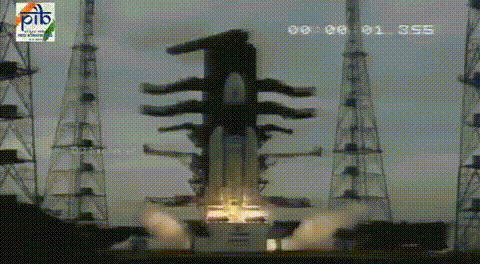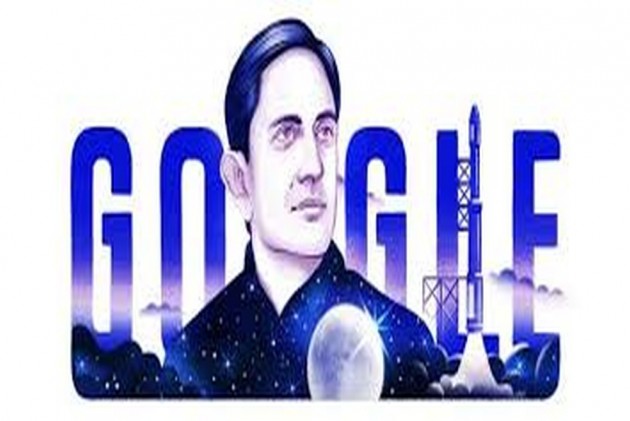Today (December 30, 1971) is the anniversary of Padma Bhushan Vikram Sarabhai, the father of the Indian space program, the founder of ISRO.


Vikram Ambalal Sarabhai was born on August 12, 1919, in Ahmedabad to a wealthy family. Her parents, Ambalal Sarabhai and Sarala Devi were involved in the spinning industry. He could have developed into an entrepreneur if he had counted. But his passion was all about math and physics. He received his primary education at a Montessori school run by his parents. As the Sarabhai family was involved in the freedom struggle, Gandhi, Nehru, Tagore, Melalana Azad, Sarojini Naidu, C.V. Raman Leaders like have stayed at his house. So their impact was on him. He went to London for higher studies and returned to India due to World War II. While thinking of taking care of the family business, Sir CV Raman at the Indian Institute of Science, Bangalore. Joined as a researcher.

His interest in the natural
sciences turned to astronomy. He set up observation centres across the country
to study cosmic rays. He fitted self-made instruments at research centres set
up in Bangalore, Pune and the Himalayas. When he returned home after completing
his doctorate in London in 1947, India had achieved independence. Realizing
that India’s future in the field of science should be better, he set up the
‘Physics Research’ Center in Ahmedabad. He established the first
standardization laboratory for spinning mills in India. In 1955, he established
physics laboratories at Gulmarg, Thiruvananthapuram and Kodaikanal in Kashmir.


He was also interested in the
arts such as music, dance and film. He married the famous dancer Mirunalini.
Together they started the ‘Darbana Academy’ for the arts. In 1957, the Soviet
Union launched the first Sputnik 1 satellite into Earth orbit. He realized that
satellites could carry out huge social and economic development activities such
as communication, weather forecasting and exploration of natural resources. His
Ahmedabad Physics Research Center was a pioneer in space science and space
technology research.


India's space revolution began on
a small scale in 1963 when Russia and the United States first circled the
spacecraft in manned spacecraft. On November 21 of that year, India's first
twin spy missile, the Nike-Apache (Two-Stage Sounding Rocket, Nike-Apache),
took off from the Trivandrum Thumba launch site, crashing into the sky, tearing
the sky and rising high against gravity. It carried a 50-pound Sodium Vapor
Release Payload, reached an altitude of 125 miles and set its sights on India's
space invasion. The selected Tumba Missile Center is located on Earth's
Magnetic Equator, which is rocket-propelled.


“Many are questioning the purpose
of a developing country doing space research. In this endeavour, we are engaged
in the same thought without both minds. We do not have the big dream of
competing with rich countries in pursuit of vanilla, searching for meteors or
manned spaceflight. But we will not be second to the world community in using
progressive scientific and engineering techniques to solve human and social
problems. We are determined to carry out a mission that makes sense nationally,
”said Dr Vikram Sarabhai, a scientific genius who eloquently declared the
mission of India's space program.

Vikram Sarabhai led the rocket
technology. Aryabhata was absolutely responsible for launching India’s first
satellite. He was a pioneer in the development of satellite television
broadcasting in India. Through this, he helped to educate 50 lakh people in 24
thousand villages. After the death of Homi Jahangir Baba, the father of Indian
nuclear science, he was the head of the Indian Space Research Organization
(ISRO) and expanded it further. He had a deep interest in science education. So
he created social science centres across the country.

He was determined to adhere to
the highest standards in the Indian medical field. He paved the way for the
Indian medical profession to self-manufactured medicines and medical devices. He
had high hopes for the youth. He cared to give them opportunities. He taught
many people how to dream and how to make it come true. He established the
Indian Institute of Management (IIM) in Ahmedabad for Indians to pursue higher
education. Hard worker. He was easily accessible even in the highest positions.
He greets everyone with a smile. He will overcome their fears and hesitations
and address them equally. He was determined to preserve the dignity of individual
human beings. Under his supervision, 19 people have done the research and obtained
doctoral degrees.

Vikram Sarabhai has published 86
research papers alone and with fellow researchers. He is considered the father
of the Indian space program. In 1969 he received the Shanti Swarup Patnagar
Award. He has received awards such as Padma Bhushan and Padma Vibhushan. Vikram
Ambalal Sarabhai, the father of the Indian space program, passed away on
December 30, 1971, at the age of 52 in Ahmedabad. Despite living for 52 years,
Vikram Sarabhai has taken the country on the path of progress in various fields
and is still shining today. In 1974, the International Astronomical Union in
Sydney named Vikram Sarabhai after a crater in a crater in the Sea of
Serenity.
Source By: Wikipedia
Information: Ramesh, Assistant
Professor of Physics, Nehru Memorial College, Puthanampatti, Trichy.
Get information like this
https://t.me/joinchat/jpqj3jQLN51kYTk9
Join Telegram Group.
https://chat.whatsapp.com/HHC5m0Jz3Ue1E8ilgta0YT
Join WhatsApp Group
Thanks.
Also, Read
🛑👍 CSIR-NET Physics Materials and Problems
🛑📕 21 GB and Hundreds of Physics E-Books Collection.
🛑🛥️ How does an Electric Motor work? (DC Motor).
🛑🤹♂️ Science Academies' Summer Research Fellowship Programme for Students and Teachers 2022.
🛑🔌 How does a Transformer work - Working Principle electrical engineering.
🛑🎙️ Transistors Explained - How transistors work.
🛑🔥⚡ How Thermocouples Work - basic working principle.
🛑🔌 Voltage Explained - What is Voltage? Basic electricity potential difference
🛑🔌 What is CURRENT– electric current explained, electricity basics.


.jpg)
No comments:
Post a Comment